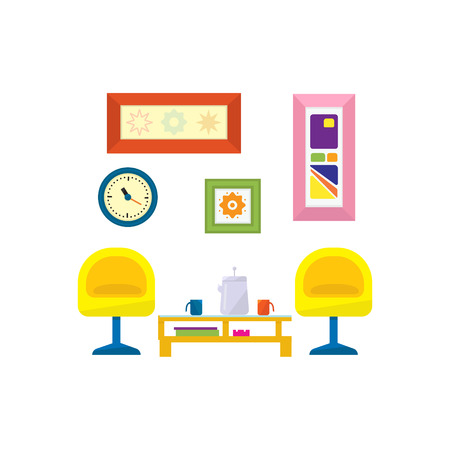Finding Your Space
When it comes to setting up a small home office in a shared space, your first mission is to scout out the ideal spot. In American homes, this often means carving out a nook in the living room, tucking a desk into a bedroom corner, or even claiming a slice of the dining area. The key is to prioritize privacy and minimize distractions—after all, you don’t want your Zoom call soundtrack to feature your roommate’s sitcom binge. Look for areas that get plenty of natural light; sunlight not only keeps you energized but also helps make video calls look more professional. If sunlight is scarce, position yourself near a lamp or invest in a good desk light. Whenever possible, choose a location away from high-traffic zones like the kitchen or front door—these spots tend to attract noise and interruptions. Don’t forget about outlets! Make sure your chosen area has easy access to power so you’re not stringing extension cords across the hallway. And finally, consider how easily you can pack up your workspace at the end of the day—flexibility is gold when sharing your home with others.
Essential Gear on a Budget
When carving out your own home office corner in a shared space, you don’t need to break the bank for top-notch gear. The key is to prioritize the essentials that make your workspace functional and comfortable without cluttering up your living area or draining your wallet. Let’s break down the must-haves, savvy budget options, and popular American stores where you can snag deals.
Key Items for a Functional Workspace
| Item | Budget-Friendly Option | Where to Shop (US) |
|---|---|---|
| Desk | Folding table or compact writing desk | IKEA, Walmart, Target, Facebook Marketplace |
| Chair | Ergonomic task chair or repurposed dining chair with cushion | Office Depot, Staples, Amazon, Goodwill |
| Laptop Stand | Adjustable stand or sturdy shoebox DIY | Amazon, Best Buy, Target |
| Lamp | Clip-on LED lamp or vintage desk lamp | Home Depot, IKEA, Thrift Stores |
| Storage Solutions | Slim rolling cart, wall shelves, or storage bins | The Container Store, Dollar Tree, Walmart |
| Noise Control | Noise-canceling headphones or white noise machine app | Best Buy, Amazon, TJ Maxx |
| Cable Management | Velcro ties or DIY binder clips | Amazon, Office Depot, Dollar General |
Tried-and-True Tips for Scoring Deals Stateside:
- Shop Seasonal Sales: Look for back-to-school specials in late summer and Black Friday deals after Thanksgiving for significant savings on office essentials.
- Dive into Secondhand Finds: Don’t sleep on thrift shops and local buy/sell apps—Americans love scoring unique bargains at Goodwill or on Craigslist.
- Loyalty Pays Off: Sign up for rewards programs at stores like Target and Office Depot for extra discounts and coupons.
The Bottom Line:
You don’t need a Madison Avenue budget to set up a workspace that’s both stylish and sensible. By mixing new basics with thrifted treasures and taking advantage of classic American sales events, your small home office can be as efficient as it is affordable—leaving you more cash for coffee runs or retro wall art.

3. Making It Yours: Personalizing Your Work Zone
Just because your home office shares space with your living room or bedroom doesn’t mean it has to feel bland or uninspired. Adding a personal touch is key to making your workspace feel inviting and harmonious with the rest of your home. Start by choosing a color palette that complements your existing decor—think soft blues for calm or bold reds for energy. Mix in some vintage-inspired desk accessories, like a classic brass lamp or a retro pencil holder, to give your corner a dash of character. Don’t forget about comfort: an ergonomic chair with a cozy throw pillow not only supports your back but also brings warmth to the setup. Hang up some art that makes you smile, whether it’s framed family photos, nostalgic postcards, or quirky prints from local artists. Plants are another great way to bridge work and home vibes; a simple potted succulent or trailing ivy adds life without demanding too much attention. If you’re sharing space with roommates or family, consider adding a small sign or chalkboard where you can jot down your work hours—a subtle cue that says “on duty,” but with style. By blending personality and practicality, you’ll craft a workspace that truly feels like yours—even if it’s just one corner of the room.
4. Setting Boundaries with Roommates or Family
Sharing your home office space with others can be tricky, especially when you’re aiming for productivity and peace of mind. Open and honest communication is key to making it work. Start by scheduling a sit-down chat with your roommates or family members to explain your work-from-home needs. Be clear about your work hours, the importance of quiet during meetings, and any “do not disturb” signals you might use.
Establish Clear Ground Rules
Setting ground rules early can help prevent misunderstandings down the road. Consider discussing:
| Area | Example Rule |
|---|---|
| Work Hours | No loud music or TV during 9 AM – 5 PM |
| Shared Space Usage | Keep the desk area clutter-free for everyone’s use |
| Meetings | Give a heads-up before important video calls |
Use Signals and Reminders
Sometimes a simple visual cue can make all the difference. Try putting up a sign or using headphones as a universal symbol that you’re in “work mode.” If you share a calendar, mark off your most important focus times so others know when not to interrupt.
Balancing Flexibility and Respect
Remember, flexibility goes both ways. Be willing to compromise—maybe you swap out your workspace during certain hours, or agree on quiet time blocks that suit everyone’s schedule. The goal is mutual respect: honoring your need for productivity without disrupting the household’s flow.
Troubleshooting Common Issues
If boundaries get crossed (and they will, occasionally), address issues quickly but calmly. Use “I” statements—like “I really need quiet between 10 and noon”—to keep things positive and avoid blame. Regular check-ins can help tweak your arrangement as everyone’s routines evolve.
5. Staying Organized in Tight Quarters
When your “office” is a sliver of the living room or a corner of your bedroom, organization becomes your secret superpower. No need for a full-blown built-in—just some clever hacks and a sprinkle of discipline can keep chaos at bay.
Embrace Vertical Space
Think up, not out! Wall-mounted shelves, pegboards, or even vintage-inspired ladder shelves can hold supplies without eating up precious square footage. Hanging file organizers and magnetic boards also help keep essentials within arm’s reach but off your work surface.
Multi-Tasking Furniture
Look for pieces that do double duty: an ottoman with storage inside, a fold-down desk, or a rolling cart that can be tucked away after hours. These not only save space but make it easy to reclaim the room when your workday ends—no more laptop graveyards on the kitchen table!
Curtail Clutter with Containers
Retro tins, mason jars, and color-coded bins are perfect for wrangling pens, chargers, and sticky notes. Assign everything a home so you don’t waste time hunting for your headphones between Zoom calls. Labeling containers (yes, even the ones you think you’ll remember) adds a dash of order and old-school charm.
Routine Is Your Friend
Take five minutes at the end of each day to reset your workspace. Put away supplies, wipe down surfaces, and prep for tomorrow. This simple ritual helps separate “work mode” from “home mode” and keeps shared spaces looking sharp for everyone.
Staying organized in small spaces isn’t just about neatness—it’s about creating a vibe that lets you focus and feel good every time you sit down to work. With these smart storage moves, you’ll master the art of working small and living large.
6. Maximizing Productivity (and Sanity)
When your “corner office” shares space with the living room, staying focused can feel like an Olympic sport. But you can keep your workflow on track and your spirits up with a few time-tested (and sanity-saving) strategies that actually work in real American homes.
Set Micro-Boundaries
Let’s be real: not everyone can close a door and disappear. Instead, try clear visual cues—a designated desk lamp switched on means “in the zone,” or headphones signal “do not disturb.” Even a simple sticky note can help set expectations for roommates, kids, or partners sharing your space.
Stick to a Rhythm, Not a Rigid Schedule
You might not have a 9-to-5, but you can still carve out blocks of deep work. Try using a timer (the classic Pomodoro method works wonders) to focus for 25 minutes, then reward yourself with a stretch, snack, or quick chat. The trick is consistency—your brain will start to expect these bursts of productivity.
Banish Cabin Fever
Feeling stir-crazy? Mix it up by occasionally working from a different nook in your home, stepping outside for calls, or even switching up your playlist to reset the mood. A small change of scenery can work magic on your motivation and keep things from feeling stale.
Tame the Tech Temptations
If social media or news rabbit holes are calling your name, try browser blockers or put your phone in “Focus Mode.” Out of sight, out of mind is more than an old saying—it’s a survival skill when distractions are just one click away.
Make Room for Real Breaks
No shame in taking five to walk around the block or grab another coffee. In fact, regular breaks aren’t just good for your body—they help reset your mind so you come back sharper. Don’t wait until you’re frazzled; schedule those pauses like any other meeting.
Bottom line: With a dash of creativity and some boundaries (even if they’re invisible), you really can get stuff done—even if you’re sharing space with others who may or may not respect your “office hours.” Stay flexible, stay kind to yourself, and let that workflow hum along—shared-space style.

